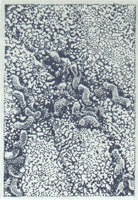Pleomorphism (microbiology) on:
[Wikipedia]
[Google]
[Amazon]
In microbiology, pleomorphism (from
 Monomorphic theory, supported by Louis Pasteur,
Monomorphic theory, supported by Louis Pasteur,
Ancient Greek
Ancient Greek includes the forms of the Greek language used in ancient Greece and the ancient world from around 1500 BC to 300 BC. It is often roughly divided into the following periods: Mycenaean Greek (), Dark Ages (), the Archaic p ...
, ''pléō'', "more", and , ''morphḗ'', form), also pleiomorphism, is the ability of some microorganisms to alter their morphology, biological functions or reproductive modes in response to environmental conditions. Pleomorphism has been observed in some members of the Deinococcaceae
''Deinococcus'' (from the el, δεινός, ''deinos'', "dreadful, strange" and κόκκος, ''kókkos'', "granule") is in the monotypic family Deinococcaceae, and one genus of three in the order Deinococcales of the bacterial phylum ''Deinococ ...
family of bacteria. The modern definition of pleomorphism in the context of bacteriology is based on ''variation'' of morphology or functional methods of the individual cell, rather than a heritable ''change'' of these characters as previously believed.
Bacteria
In the first decades of the 20th century, the term "pleomorphism" was used to refer to the idea thatbacteria
Bacteria (; singular: bacterium) are ubiquitous, mostly free-living organisms often consisting of one Cell (biology), biological cell. They constitute a large domain (biology), domain of prokaryotic microorganisms. Typically a few micrometr ...
change morphology, biological systems, or reproductive methods dramatically according to environmental cues. This claim was controversial among microbiologists of the time, and split them into two schools: the monomorphists, who opposed the claim, and the pleomorphists such as Antoine Béchamp
Pierre Jacques Antoine Béchamp (16 October 1816 – 15 April 1908) was a French scientist now best known for breakthroughs in applied organic chemistry and for a bitter rivalry with Louis Pasteur.
Béchamp developed the Béchamp reduction ...
, Ernst Almquist, Günther Enderlein, Albert Calmette
Léon Charles Albert Calmette ForMemRS (12 July 1863 – 29 October 1933) was a French physician, bacteriologist and immunologist, and an important officer of the Pasteur Institute. He discovered the Bacillus Calmette-Guérin, an attenuated for ...
, Gastons Naessens, Royal Raymond Rife, and Lida Mattman, who supported the posit. According to a 1997 journal article by Milton Wainwright
Milton Wainwright (born 23 February 1950) is a British microbiologist who is known for his research into what he claims could be extraterrestrial life found in the stratosphere.
Biography
Wainwright graduated from the University of Nottingha ...
, a British microbiologist, pleomorphism of bacteria lacked wide acceptance among modern microbiologists of the time.
 Monomorphic theory, supported by Louis Pasteur,
Monomorphic theory, supported by Louis Pasteur, Rudolf Virchow
Rudolf Ludwig Carl Virchow (; or ; 13 October 18215 September 1902) was a German physician, anthropologist, pathologist, prehistorian, biologist, writer, editor, and politician. He is known as "the father of modern pathology" and as the founder ...
, Ferdinand Cohn, and Robert Koch
Heinrich Hermann Robert Koch ( , ; 11 December 1843 – 27 May 1910) was a German physician and microbiologist. As the discoverer of the specific causative agents of deadly infectious diseases including tuberculosis, cholera (though the bacteri ...
, emerged to become the dominant paradigm in modern medical science: it is now almost universally accepted that each bacterial cell is derived from a previously existing cell of practically the same size and shape. However it has recently been shown that certain bacteria are capable of dramatically changing shape.
Sergei Winogradsky took a middle-ground stance in the pleomorphism controversy. He agreed with the monomorphic school of thought, but disagreed with some of the foundational microbiological beliefs that the prominent monomorphists Cohn and Koch held. Winogradsky published a literature review titled "The Doctrine of Pleomorphism in Bacteriology" in which he attempted to explicate the pleomorphic debate, identifying the fundamental errors within each side's argument. Winogradsky posited that pleomorphists Naegli and Zopf were unable to perceive the existence of bacterial morphological classes, and that Cohn and Koch, within their own suppositions, ignore species of morphologically variant bacteria that are unable to grow within axenic
In biology, axenic (, ) describes the state of a culture in which only a single species, variety, or strain of organism is present and entirely free of all other contaminating organisms. The earliest axenic cultures were of bacteria or unicellul ...
cultures. Winogradsky explained the perception of pleomorphic bacteria as bacteria progressing through different stages within a developmental cycle, thereby providing the fundamental structure for a theory of morphology based upon the concept of dynamic deviation from a morphological type, or biotype
{{Short pages monitor